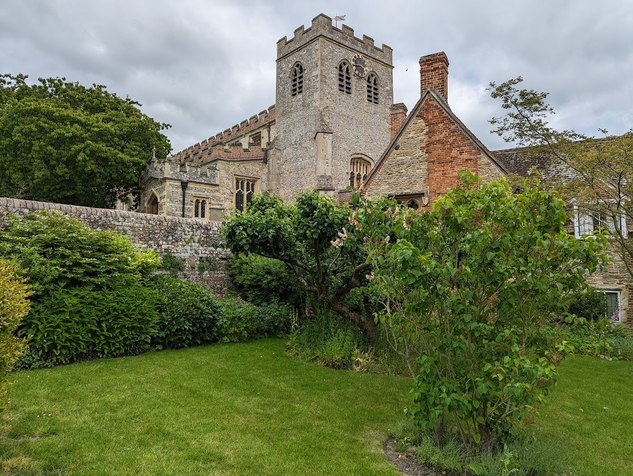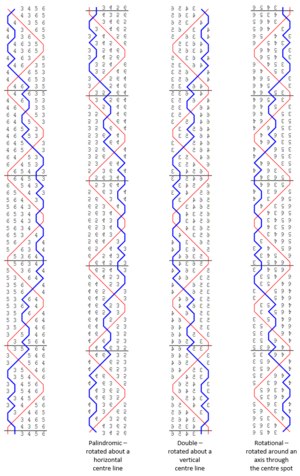-
CCCBR Methods Library UpdateThe digest is generated completely automatically by the site, so this could only be influenced by changing the information in the original post. I suspect that would result in the summary being cut short even earlier, and it already doesn't show all the methods. It does give you a click through to the original post though, and that is better because you can then click on a method or interest to show you a blue line.
-
Recordings of ringingAnd here is another better one of the old Bow bells:
https://www.youtube.com/watch?v=VOb6hB_lfMI.
Not dated, but the recording is listed in Homochord Records catalogue of 1926.
https://www.yumpu.com/en/document/read/32623773/homochord-1926-british-library-sounds -
Recordings of ringingSome relevant context for possible dates:
- Big Ben in 1890: https://www.youtube.com/watch?v=iOl5rPP47pA
- First broadcast ringing 1925 (though it is not clear from this whether the BBC have a recording of this, or whether it was played on the Feedback programme): https://ldgcb.org.uk/news/news2014/crowland_radio4.php
- Pre war Bow bells undated: https://www.youtube.com/watch?v=13NJdbjhLFI
- Westminster Abbey 1947: https://www.youtube.com/watch?v=8MhR03ddTSw&list=PL3kG3TM8jFKgMFvPFJcP2Na9KbVP0-8Up
-
Dem stays, dem stays, dem dry staysThis is just about understanding how to use Ringing Forums, @Peter Sotheran, and is nothing to do with Twitter or anything else. Above the box you type your message in are a number of icons. If you click @ and enter someone's name, it is called a "mention". It sends an email to the person mentioned alerting them to the mention.
Similarly, to upload your photo to the Forum you click on the icon with an upwards arrow, then select the photo from your computer. Once uploaded, it lists it underneath with an insert button so that you can include it where you want in you message - like this:
You can click the Preview button to see how it will look before posting the comment. -
Dem stays, dem stays, dem dry staysClick on the last icon to first upload your photo, @Peter Sotheran then you can select it to show in your message.
-
Grooves in tower archesIt is the case though that similar marks appear lower down on church walls, which is why I said "usual explanation". I agree that sharpening a blade is done flat to a stone, and why use the church anyway rather than spare stone blocks.
The marks are so numerous and deep at Sawston, you do wonder how many hundreds of years of pulling and replacement ropes would be required to make them by ropes attached to bells. -
Was Stedman inevitableThe answer is clearly yes, and the reason is the early focus on Doubles. In Tinntinnalogia, generating extents with plain changes is initially explored, but 'cross change peals' were considered more desirable. Even the stage name of Doubles tells us that maximising two pairs swapping was the aim. On 5 bells, cross changes (with a single place made) can only generate half the possible rows (60), and there are very few ways of doing this possible. The half hunt touch of Grandsire Doubles (bobbing alternate leads) is one, but if you want a principle so that all 5 bells do the same work, I think you only have Stedman, Carter and their reverses.
-
Peal ringing opportunitiesI don't think that we should kid ourselves that something has changed in this regard. I remember it being difficult to get the opportunity to ring a peal when I was learning in the 1970s, and I could ring Surprise Major before I rang one. You had to let the peal bands know that you were interested and then wait for them to be short for an attempt. You then had to ring well, otherwise it was likely you would not be asked again.
-
Peal ringing declineIt also showed that the number of handbell peal ringers is also gradually increasing, with no apparent drop during or after Covid: 2019-313, 2020-318, 2021-323, 2022-327. Only three years have ever been higher: 1982-343, 1972-389, 1971:335.
-
CCCBR Methods Library Updatesadly I couldn't nudge it to a course-layout similar to the above. — PeterScott
I have improved the layout in Complib (no calls compositions need a bit of help to format neatly). -
CCCBR Methods Library UpdateYou have a point, Peter, if you mean that Double should mean rotation about two points of symmetry.
I don't know the reasoning behind the 2004 definitions, but it could be trying to fit the existing methods that had Double in their name. In other words, they were following precedent. Looking at the 34 methods that are Double, but not Palindromic, the earliest is Double Eastern Bob Major, which was first pealed in 1752! The others with Double in their name rung before 2004 are: Double Eastern Bob Royal (1973), Double Ascension Cyclic Bob Maximus (2002), Double Cambridge Cyclic Bob Major (2002) and Double Resurrection Cyclic Bob Royal (2002). Perhaps it is the flurry in 2002 that triggered the Methods Committee's definition.
Interestingly there is only one rung method currently that has Double and Rotational symmetry that is not Palindromic: Te Deum Treble Place Singles. -
CCCBR Methods Library UpdateThe place notation shows it's rotationally symmetric (14 to 36, 1236 to 1456), but not in the traditional sense, Double. First rung here. Complib disagrees with my symmetry analysis. — PeterScott
Symmetry is dependent upon the axis of rotation chosen for the three terms: Palindromic, Double & Rotational. Complib is consistent with the Framework for Method Ringing and former CC Decisions on this definition. The use of the prefix Double in method titles is equally consistent. Column 1 below is Double Danbury Bob Minor and columns 2, 3 and 4 are column 1 rotated using three different axes. The column with the same blue line as column 1 tells you the symmetry. In this case Double but not Palindromic or Rotational.

-
Artificial aids to memory?It is covered by a Performance norm in the Framework for Method Ringing.
6C2f) Neither ringers nor conductor(s) used any physical aids to memory during the Performance; -
Ringing Lite?Yes, there is a prejudice against chiming, and it has existed since around the time CCCBR was formed and CRAG missed the opportunity to correct that for the next few generations! — Mike Shelley
The vast majority of CC members will have had no experience of chiming, nor I imagine the CRAG team. How is the prejudice experienced, what could CRAG have done about it, what benefit would accrue, and who could champion the cause now? -
Ringing Lite?I think the statement that Devon call changes are rung with bells below the balance id a common misconception. Do the arithmetic on a 40 minutes quarter peal compared with call changes at 32 or 33 to the minute, allowing for the handstroke gap. If call changes were rung with all the bells below the balance, speed changes would be harder not easier. — Phil Gay
When you always ring below the balance, the bell is always acting as a pendulum, controlling its own rhythm and naturally keeping perfect time. The ringer never needs to hold a bell on the balance, only to keep the pendulum from losing momentum. Changing position does require additional skill with both styles, except not the need to hold on the balance with Devon-style.
It would be good to conduct an experiment where you take two equivalent groups of non-ringers and teach each style with the same amount of rope time over the course of a week, then compare the difference. -
Ringing Lite?I'm not a HB ringer, the couple of times I did try (under duress) — John de Overa
There are many good towerbell ringers that try handbells and give up very quickly because their expectation is that they should be able to ring what they can ring on towerbells immediately, and they are not prepared to put in even a small fraction of the time they spent learning to ring towerbells. The 'under duress' is also quite telling, I think you are much more likely to succeed with something you actually are keen to do. -
Ringing Lite?We have two already:
1: Devon-style call changes - easier to learn to ring below the balance; quicker to reach an acceptable standard; an end in itself.
2: Bob Minor on handbells - Plain hunt can be taught in a single session; Plain courses in a few more; Quarter-peal as a short-term objective (straightforward if there are two experienced helpers). -
Forum managementThe moderation tools are limited to editing or deleting posts. However, it is easy enough for anyone to start a new discussion and then add a comment to the original discussion saying:
... continuing on Forum management or whichever discussion it is (using a link). -
Ringing from Place NotationYes, there are handbell ringers that ring purely by place notation. You ring plain hunt with two rules: hunt below an even place and dodge above; hunt above an odd place, dodge below. It is equally possible to do this on towerbells, and it can be made easier by the conductor calling out the places.
There are problems using this approach for longer touches though. Apart from learning the place notation, which is itself tricky for all but the simplest notations, there is a real difficulty correcting an error. The conductor would need to say exactly which place you should be ringing in, and what the next and subsequent place notations are. Once said, the information has immediately changed because you will now be in a different place.
For this reason, ringing by the grid is to be preferred, because it is a visualization of the place notation with more context, including where the treble is and when the lead ends and half leads occur.
Graham John

Start FollowingSend a Message
- Contact Us
- RingingForums Policy
- Terms of Service
- Useful Hints and Tips
- Sign In
- © 2025 Ringing Forums

